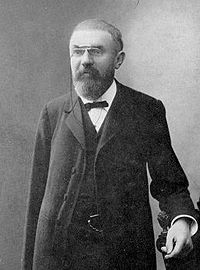This is an old revision of this page, as edited by OAbot (talk | contribs) at 21:42, 18 August 2023 (Open access bot: doi updated in citation with #oabot.). The present address (URL) is a permanent link to this revision, which may differ significantly from the current revision.
Revision as of 21:42, 18 August 2023 by OAbot (talk | contribs) (Open access bot: doi updated in citation with #oabot.)(diff) ← Previous revision | Latest revision (diff) | Newer revision → (diff) Representation theory of an important group in physics| This article includes a list of general references, but it lacks sufficient corresponding inline citations. Please help to improve this article by introducing more precise citations. (November 2019) (Learn how and when to remove this message) |
| Lie groups and Lie algebras | ||||
|---|---|---|---|---|
 | ||||
Classical groups
|
||||
Simple Lie groups
|
||||
| Other Lie groups | ||||
| Lie algebras | ||||
| Semisimple Lie algebra | ||||
| Representation theory | ||||
| Lie groups in physics | ||||
| Scientists | ||||

In mathematics, the representation theory of the Poincaré group is an example of the representation theory of a Lie group that is neither a compact group nor a semisimple group. It is fundamental in theoretical physics.
In a physical theory having Minkowski space as the underlying spacetime, the space of physical states is typically a representation of the Poincaré group. (More generally, it may be a projective representation, which amounts to a representation of the double cover of the group.)
In a classical field theory, the physical states are sections of a Poincaré-equivariant vector bundle over Minkowski space. The equivariance condition means that the group acts on the total space of the vector bundle, and the projection to Minkowski space is an equivariant map. Therefore, the Poincaré group also acts on the space of sections. Representations arising in this way (and their subquotients) are called covariant field representations, and are not usually unitary.
For a discussion of such unitary representations, see Wigner's classification.
In quantum mechanics, the state of the system is determined by the Schrödinger equation, which is invariant under Galilean transformations. Quantum field theory is the relativistic extension of quantum mechanics, where relativistic (Lorentz/Poincaré invariant) wave equations are solved, "quantized", and act on a Hilbert space composed of Fock states.
There are no finite unitary representations of the full Lorentz (and thus Poincaré) transformations due to the non-compact nature of Lorentz boosts (rotations in Minkowski space along a space and time axis). However, there are finite non-unitary indecomposable representations of the Poincaré algebra, which may be used for modelling of unstable particles.
In case of spin 1/2 particles, it is possible to find a construction that includes both a finite-dimensional representation and a scalar product preserved by this representation by associating a 4-component Dirac spinor with each particle. These spinors transform under Lorentz transformations generated by the gamma matrices (). It can be shown that the scalar product
is preserved. It is not, however, positive definite, so the representation is not unitary.
Main article: Representation theory of the Lorentz groupReferences
- Greiner, W.; Müller, B. (1994). Quantum Mechanics: Symmetries (2nd ed.). Springer. ISBN 978-3540580805.
- Greiner, W.; Reinhardt, J. (1996), Field Quantization, Springer, ISBN 978-3-540-59179-5
- Harish-Chandra (1947), "Infinite irreducible representations of the Lorentz group", Proc. R. Soc. A, 189 (1018): 372–401, Bibcode:1947RSPSA.189..372H, doi:10.1098/rspa.1947.0047
- Hall, Brian C. (2015), Lie groups, Lie algebras, and Representations: An Elementary Introduction, Graduate Texts in Mathematics, vol. 222 (2nd ed.), Springer, doi:10.1007/978-3-319-13467-3, ISBN 978-3319134666, ISSN 0072-5285
- Wigner, E. P. (1939), "On unitary representations of the inhomogeneous Lorentz group", Annals of Mathematics, 40 (1): 149–204, Bibcode:1939AnMat..40..149W, doi:10.2307/1968551, JSTOR 1968551, MR 1503456, S2CID 121773411.
Notes
- Lenczewski, R.; Gruber, B. (1986). "Indecomposable representations of the Poincare algebra". Journal of Physics A: Mathematical and General. 19 (1): 1–20. Bibcode:1986JPhA...19....1L. doi:10.1088/0305-4470/19/1/006. ISSN 0305-4470.
- Paneitz, Stephen M. (1984). "All linear representations of the Poincaré group up to dimension 8". Annales de l'Institut Henri Poincaré A. 40 (1): 35–57.
See also
- Wigner's classification
- Representation theory of the Lorentz group
- Representation theory of the Galilean group
- Representation theory of diffeomorphism groups
- Particle physics and representation theory
- Symmetry in quantum mechanics
 with each particle. These spinors transform under Lorentz transformations generated by the
with each particle. These spinors transform under Lorentz transformations generated by the  ). It can be shown that the scalar product
). It can be shown that the scalar product
